I love experimenting with different flavors in my cooking, and hoisin sauce is one condiment that I always keep on hand. If you’re not familiar with hoisin sauce, it’s a thick, dark sauce that’s often used in Asian cuisine. But what does hoisin sauce taste like?

Hoisin sauce has a unique flavor profile that’s both sweet and savory. It’s made from a combination of soybeans, garlic, vinegar, and sugar, among other ingredients.
The sauce has a thick consistency and a glossy appearance, which makes it perfect for glazing meats or adding to stir-fries.
Overall, hoisin sauce has a complex taste that’s hard to describe. Some people compare it to American-style barbecue sauce, but with more saltiness and less sweetness.
It has a tangy, umami flavor that adds depth to any dish. Whether you’re a fan of Asian cuisine or just looking to try new flavors, hoisin sauce is definitely worth a try.
Key Takeaways
- Hoisin sauce is a thick, dark sauce that’s often used in Asian cuisine.
- It has a unique flavor profile that’s both sweet and savory, with a tangy, umami taste.
- Hoisin sauce is made from a combination of soybeans, garlic, vinegar, and sugar, among other ingredients.
Understanding Hoisin Sauce
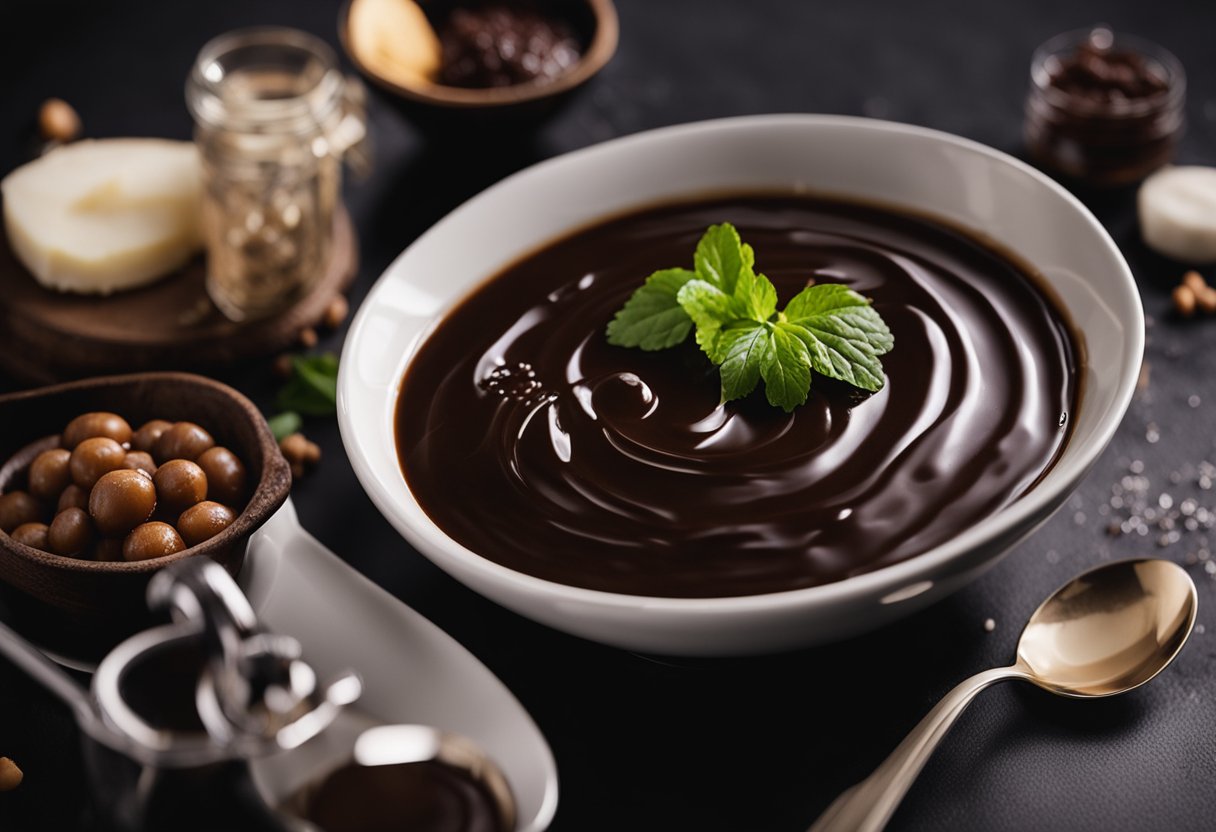
Hoisin sauce is a popular condiment used in Asian cuisine, particularly in Chinese and Vietnamese food recipes. It is a thick and dark sauce with a unique blend of flavors that makes it a staple in many dishes.
Hoisin sauce is often referred to as a Chinese condiment, but it actually originated in Cantonese cuisine. The name “hoisin” translates to “seafood” in Cantonese, but the sauce does not contain any seafood ingredients. Instead, it is made from a combination of soybeans, garlic, vinegar, sugar, and various spices.
The flavor of hoisin sauce is a combination of sweet, salty, and savory. It has a distinct umami flavor that comes from the fermented soybean paste used in its preparation.
The sweetness of the sauce comes from the sugar or honey added to it. The sauce also has a slight tanginess from the vinegar used in its preparation.
Hoisin sauce is a versatile condiment that can be used in a variety of ways. It is often used as a dipping sauce for spring rolls, dumplings, and other appetizers.
It is also used as a glaze for meats, such as chicken, pork, and beef. In Chinese cuisine, hoisin sauce is a key ingredient in dishes like Peking duck and moo shu pork.
Overall, hoisin sauce is a flavorful and essential condiment in Asian cuisine. Its unique blend of sweet, salty, and savory flavors makes it a popular choice for many dishes.
Taste Profile of Hoisin Sauce
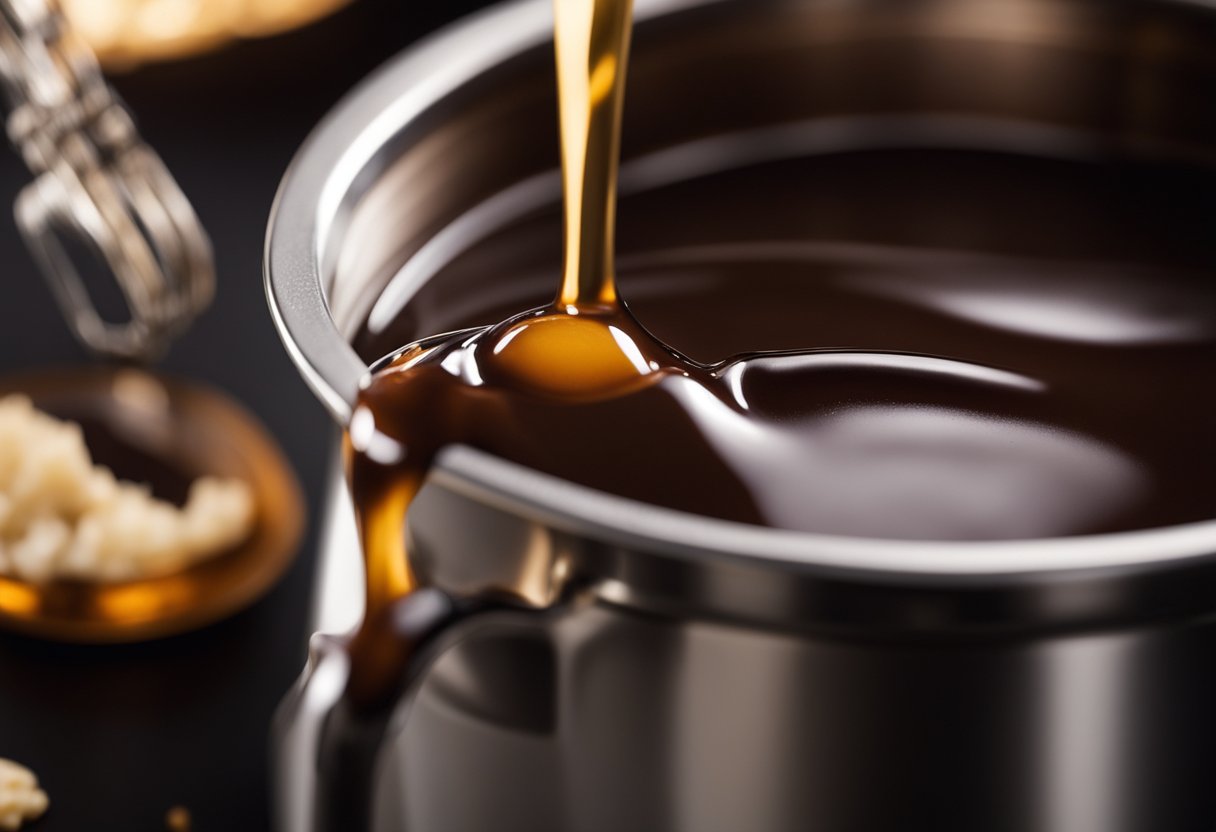
As someone who has tasted hoisin sauce multiple times, I can confidently say that it has a unique and complex flavor profile. Hoisin sauce is a staple in Asian cuisine, and it is used in various dishes to add a distinct taste to them.
The flavor of hoisin sauce is a combination of sweet, salty, and umami. It has a rich, savory taste that can be described as meaty or brothy. The sweetness in hoisin sauce is not overpowering, and it is balanced out by the saltiness and umami flavor.
In terms of texture, hoisin sauce is thick and viscous. It has a glossy appearance, and it clings to food well. This makes it an excellent glaze for meats and vegetables.
The fermented soybean paste in hoisin sauce gives it a tangy taste that adds depth to the overall flavor profile. Additionally, hoisin sauce can have a bit of spiciness to it, depending on the brand and recipe. However, the spiciness is usually mild and does not overpower the other flavors.
Overall, hoisin sauce has a unique and complex taste that adds depth and richness to any dish it is used in. Its combination of sweet, salty, and umami flavors, along with its tanginess and mild spiciness, make it a versatile and essential ingredient in Asian cuisine.
Ingredients in Hoisin Sauce
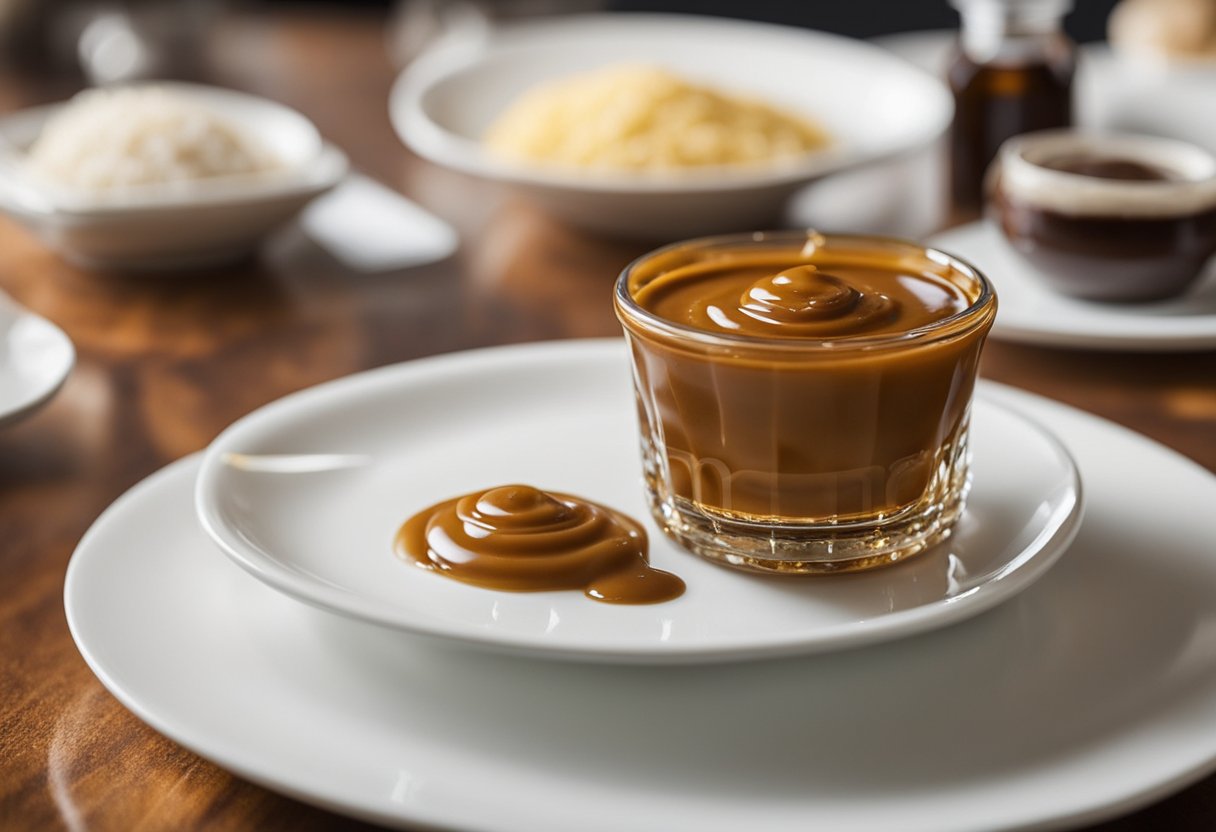
As someone who has tasted hoisin sauce before, I can confidently say that it has a unique flavor that is both sweet, salty, and slightly spicy. But what exactly goes into making this flavorful sauce?
At its core, hoisin sauce is made using fermented soybean paste, which gives it its distinct umami flavor. However, there are a variety of other ingredients that are commonly used in hoisin sauce recipes, including garlic, sugar, salt, chili, sesame, vinegar, water, and various spices.
Some hoisin sauce recipes also call for additional ingredients such as peanut butter, honey, sesame oil, rice, fermented soybeans, starch, cornstarch, wheat, soy sauce, miso, chili pepper, molasses, wheat flour, black bean paste, sweet potato, ginger, Chinese five spice, red chili peppers, and sesame seeds.
While the exact recipe for hoisin sauce can vary depending on the brand and the region it comes from, most recipes will include a combination of the above ingredients.
The result is a sauce that is both sweet and savory, with a rich, complex flavor that pairs well with a variety of different dishes.
So, if you’re looking to add some depth and flavor to your Asian-inspired dishes, consider giving hoisin sauce a try. With its unique blend of ingredients, it’s sure to add a delicious and complex flavor to any meal.
Uses of Hoisin Sauce
I love using hoisin sauce in my cooking. It is a versatile condiment that can be used in many different ways. Here are some of the most common uses for hoisin sauce:
- Marinade: Hoisin sauce makes a great marinade for chicken, seafood, and ribs. Its sweet and savory flavor pairs well with many different meats and seafood.
- Dipping Sauce: Hoisin sauce can be used as a dipping sauce for spring rolls, dumplings, and other Asian appetizers. It adds a delicious flavor and depth to these dishes.
- Barbecue Sauce: Hoisin sauce is sometimes referred to as Chinese barbecue sauce. It can be used as a glaze or sauce for grilled meats and vegetables.
- Stir-Fries: Hoisin sauce is a key ingredient in many vegetable stir-fries and noodle dishes. It adds a rich, savory flavor to these dishes.
- Peking Duck: Hoisin sauce is traditionally served with Peking duck, a Cantonese dish. Its sweet and tangy flavor pairs perfectly with the rich, fatty duck meat.
Overall, hoisin sauce is a versatile condiment that can be used in many different ways. Its sweet and savory flavor is perfect for marinades, dipping sauces, barbecue sauces, stir-fries, and more.
Making Your Own Hoisin Sauce
I love making my own hoisin sauce because it allows me to customize the flavor to my liking. Homemade hoisin sauce is also free of preservatives and additives, making it a healthier option.
To make homemade hoisin sauce, you will need the following ingredients:
- Soy sauce
- Peanut butter
- Honey
- Rice vinegar
- Sesame oil
- Garlic
- Chinese five-spice powder
To make the sauce, I start by mixing together the soy sauce, peanut butter, honey, rice vinegar, and sesame oil in a bowl. I then add in minced garlic and Chinese five-spice powder and stir until well combined.
It’s important to note that homemade hoisin sauce may not taste exactly like store-bought hoisin sauce. However, I find that the homemade version has a fresher and more vibrant flavor.
One of the benefits of making your own hoisin sauce is that you can adjust the ingredients to suit your taste preferences. For example, if you prefer a sweeter sauce, you can add more honey. If you like a spicier sauce, you can add some chili flakes or Sriracha.
Overall, making your own hoisin sauce is a fun and easy way to experiment with different flavors and create a sauce that is uniquely your own.
Storing Hoisin Sauce
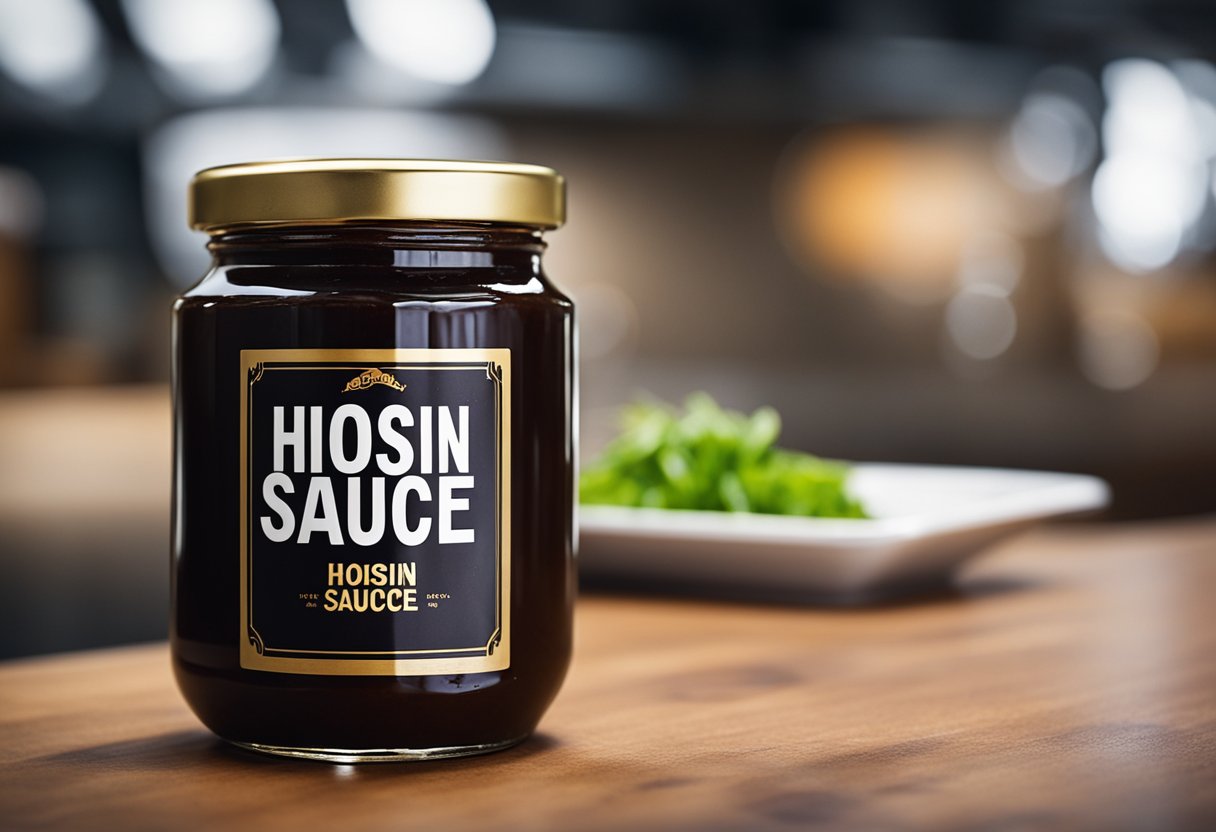
As someone who frequently uses hoisin sauce in my cooking, I know how important it is to store it properly to maintain its flavor and texture. Here are some tips on how to store hoisin sauce:
- Hoisin sauce is typically thick and has a dark hue. It is commonly found in grocery stores in bottles or jars.
- Once opened, it is best to refrigerate hoisin sauce to keep it fresh for longer. The cool temperature of the refrigerator helps slow down the fermentation process, which can cause the sauce to spoil faster if left at room temperature.
- When refrigerating hoisin sauce, it is important to store it in a cool, dark place. Direct sunlight and heat can cause the sauce to spoil faster and lose its flavor.
- If you are unsure whether your hoisin sauce is still good, check for any signs of spoilage such as mold or an off smell. If you notice any of these signs, it is best to discard the sauce and purchase a new bottle.
Overall, storing hoisin sauce in the refrigerator in a cool, dark place is the best way to maintain its flavor and texture for longer. By following these simple tips, you can ensure that your hoisin sauce stays fresh and delicious for all your cooking needs.
Hoisin Sauce in Different Cuisines
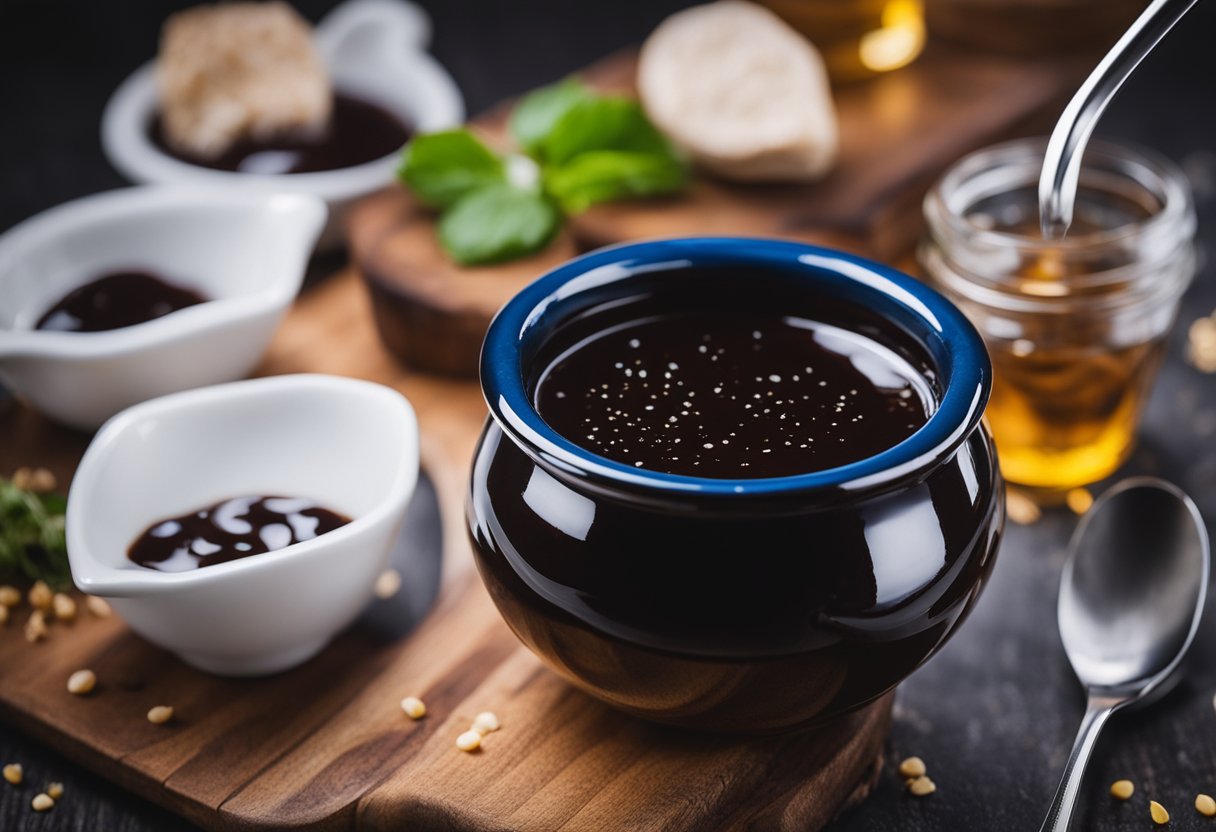
I’ve always been fascinated by how a single ingredient can be used in so many different ways across different cuisines. Hoisin sauce is one such ingredient that has found its way into various dishes in Asian and American cuisine.
In Asian cuisine, hoisin sauce is a staple ingredient in Chinese cooking and is used in dishes like Peking duck and moo shu pork.
The sauce is used as a marinade, glaze, or dipping sauce and is known for its sweet and savory flavor profile. The sauce is made using soybeans, sugar, vinegar, garlic, and chili peppers and has a thick consistency.
In American cuisine, hoisin sauce is often compared to American-style barbecue sauce due to its similar sweet and savory flavor profile.
However, hoisin sauce is saltier, richer, and less sweet than barbecue sauce. It is used as a glaze or marinade for meats like pork and chicken and is also used as a dipping sauce for spring rolls and dumplings.
When it comes to using hoisin sauce in different cuisines, it’s important to note that the sauce can be quite versatile.
It can be used as a substitute for other sauces like oyster sauce or sweet bean sauce in Chinese cooking. In American cooking, it can be used in place of barbecue sauce or ketchup to add a sweet and savory flavor to dishes.
Overall, hoisin sauce is a flavorful and versatile ingredient that can be used in a variety of dishes across different cuisines. Whether you’re a fan of Asian or American cuisine, hoisin sauce is definitely worth trying out in your next cooking adventure.
Hoisin Sauce and Dietary Preferences
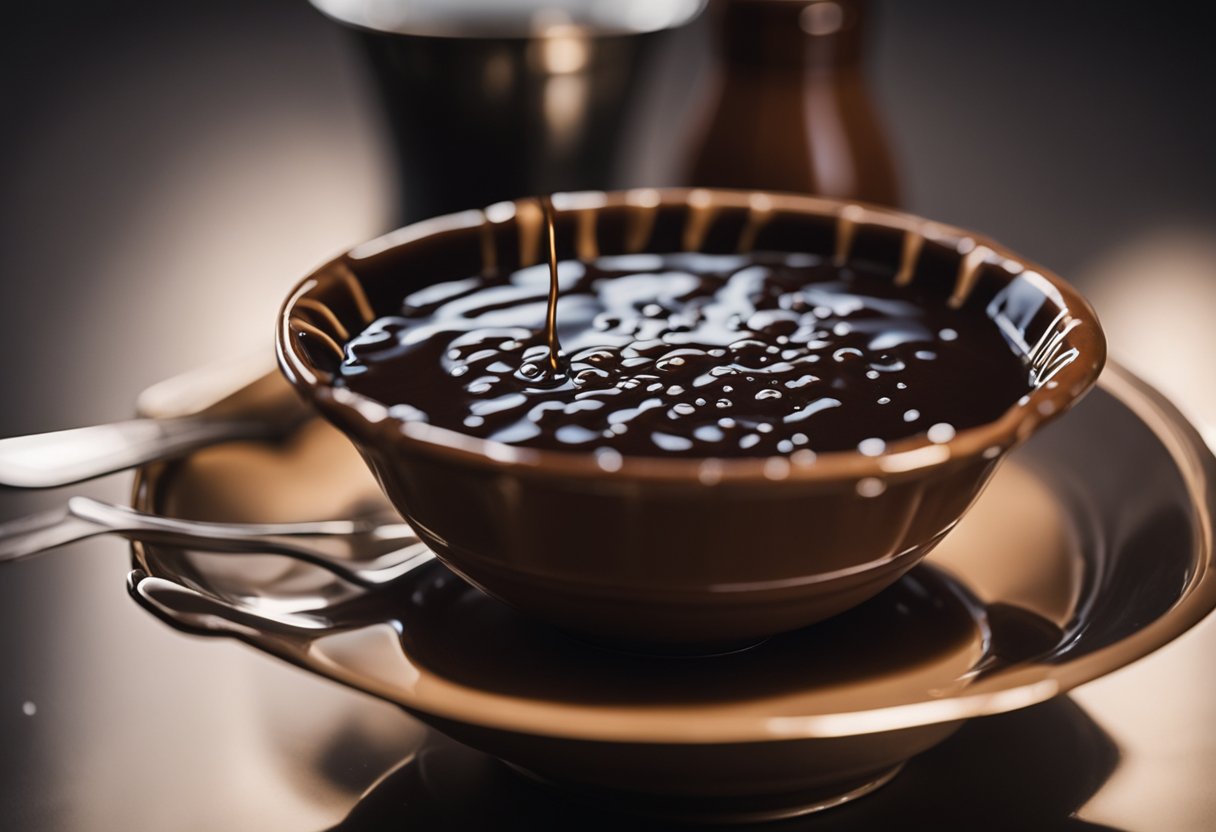
As someone who follows a vegan or vegetarian diet, you may be wondering if hoisin sauce is a suitable ingredient for you. The good news is that hoisin sauce is generally considered vegan and vegetarian-friendly, but it’s always important to check the label to ensure that there are no animal products included.
Hoisin sauce is primarily made from soybeans, sugar, vinegar, and a variety of spices. While some brands may include additional ingredients, such as fish sauce or oyster sauce, many hoisin sauces are made without these non-vegan or non-vegetarian ingredients.
If you’re concerned about the sugar content in hoisin sauce, it’s important to note that this condiment is typically high in sugar due to its use as a glaze for meats and vegetables.
However, there are low-sugar and no-sugar-added hoisin sauce options available on the market if you’re looking to reduce your sugar intake.
When it comes to nutritional information, hoisin sauce is relatively low in calories and fat, but high in sodium. This is something to keep in mind if you’re watching your sodium intake, as hoisin sauce can quickly add up in terms of sodium content when used in large quantities.
Overall, hoisin sauce can be a flavorful addition to vegan and vegetarian dishes, as it adds a sweet and savory flavor profile to stir-fries, marinades, and noodle dishes. Just be sure to check the label to ensure that the hoisin sauce you’re using is free from non-vegan or non-vegetarian ingredients.
Popular Brands of Hoisin Sauce
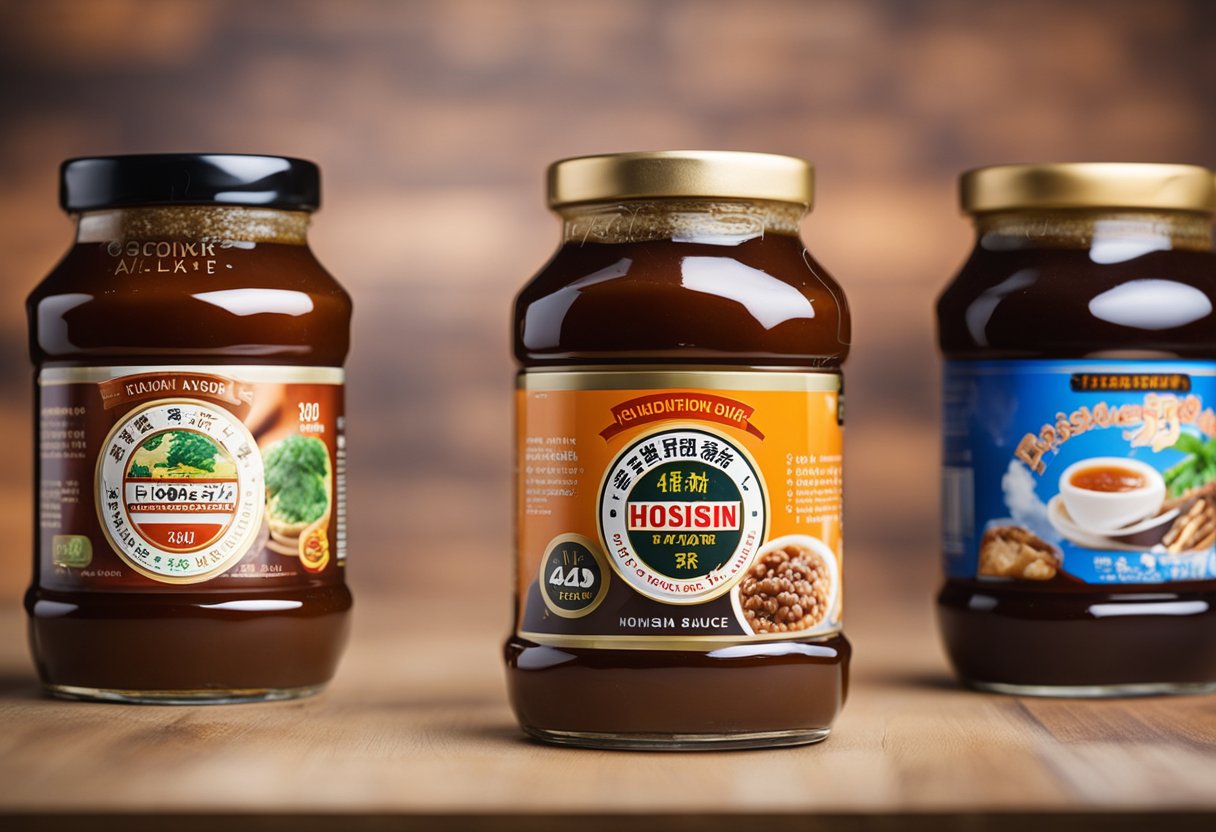
When it comes to hoisin sauce, there are a variety of brands to choose from. Here are a few popular options:
Lee Kum Kee Hoisin Sauce
One of the most well-known brands of hoisin sauce is Lee Kum Kee. Their hoisin sauce has a sweet and savory flavor with a hint of garlic and chili peppers. It’s a versatile sauce that can be used in stir-fries, marinades, and as a dipping sauce.
Kikkoman Hoisin Sauce
Kikkoman is another popular brand of hoisin sauce. Their sauce has a slightly sweeter taste than Lee Kum Kee’s and is made with soybeans, garlic, and chili peppers. It’s a great option for those who prefer a milder sauce.
Dynasty Hoisin Sauce
Dynasty is a brand that offers a more traditional hoisin sauce flavor. Their sauce has a strong taste of fermented soybeans and is slightly thicker than other brands. It’s a great option for those who want a more authentic flavor.
Sun Luck Hoisin Sauce
Sun Luck is a brand that offers a sweet and tangy hoisin sauce. It’s a great option for those who prefer a sweeter sauce that’s not too spicy. It’s also a good choice for those who want a thicker sauce that can be used as a glaze for meats.
Overall, there are many great brands of hoisin sauce to choose from. Whether you prefer a sweeter or more traditional flavor, there’s a hoisin sauce out there for everyone.
Additional Information on Hoisin Sauce
Hoisin sauce is a versatile condiment that adds a unique flavor to a variety of dishes. In this section, I will provide additional information about hoisin sauce, including its taste, texture, and uses.
Taste and Texture
Hoisin sauce has a distinctive taste that is both sweet and savory. It is made from a combination of soybeans, sugar, vinegar, and various spices, which gives it a complex flavor profile.
The sauce is also quite thick and has a glossy, sticky texture that is perfect for glazing meats or drizzling over noodles.
Uses
Hoisin sauce is a staple in many Asian cuisines and can be used in a variety of ways. It is commonly used as a dipping sauce for spring rolls or dumplings, but it can also be used as a marinade for meats such as beef or fish.
Hoisin sauce is also a key ingredient in many popular dishes, such as moo shu pork and Peking duck.
Pairings
Hoisin sauce pairs well with a variety of flavors, including spicy and tangy ingredients. For example, it can be combined with sriracha sauce to make a spicy hoisin sauce that is perfect for BBQ or stir-fry dishes. It can also be used as a glaze for meats such as char siu or as a dressing for noodle salads.
Ingredients
Hoisin sauce is made from a combination of soybeans, sugar, vinegar, and various spices. Some commercial brands may also contain coloring agents, preservatives, or stabilizers. It is important to check the ingredient list if you have any dietary restrictions or preferences.
Storage
Hoisin sauce can be stored in the pantry for up to a year, but it should be refrigerated once opened. It is important to keep the sauce tightly sealed to prevent air from getting in and causing spoilage.
Frequently Asked Questions
What are some common uses for hoisin sauce?
Hoisin sauce is a versatile ingredient that can be used in a variety of ways. It is commonly used as a dipping sauce for spring rolls, dumplings, and other appetizers.
It can also be used as a glaze for meats such as chicken, pork, and beef. Hoisin sauce is also a popular ingredient in stir-fries, marinades, and noodle dishes.
What are the main ingredients in hoisin sauce?
The main ingredients in hoisin sauce vary by brand, but typically include soybeans, sugar, vinegar, garlic, and chili peppers. Some brands may also include other ingredients such as sesame oil, ginger, and five-spice powder.
Is hoisin sauce gluten-free?
Not all hoisin sauces are gluten-free, as some brands may use wheat flour as a thickener. However, there are gluten-free versions available that use alternative thickeners such as cornstarch or tapioca starch.
It is important to check the label and ingredient list carefully if you are following a gluten-free diet.
What are some good substitutes for hoisin sauce?
If you don’t have hoisin sauce on hand or are looking for a substitute, you can try using a combination of soy sauce, sugar, and vinegar. Another option is to use oyster sauce, which has a similar flavor profile.
Some recipes may also call for a combination of hoisin sauce and peanut butter, in which case you can use a mixture of soy sauce, sugar, and peanut butter as a substitute.
What are some dishes that pair well with hoisin sauce?
Hoisin sauce pairs well with a variety of dishes, including Peking duck, moo shu pork, and stir-fried vegetables. It also works well as a marinade for grilled meats or as a glaze for roasted vegetables. Hoisin sauce can add depth and flavor to many different types of dishes.
Can you describe the taste of hoisin sauce?
Hoisin sauce has a unique flavor that is both sweet and savory. It is typically salty due to the addition of soy sauce, but also has a sweet taste from the addition of sugar or honey.
The sauce may also have a slightly tangy or spicy flavor from the addition of vinegar and chili peppers. Overall, hoisin sauce has a complex and rich flavor that can add depth to many different types of dishes.







